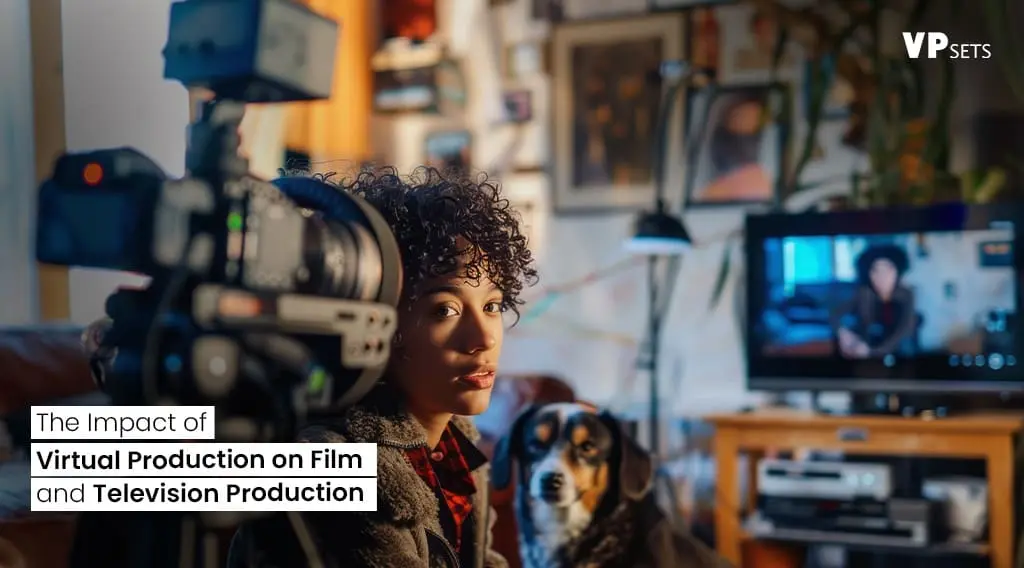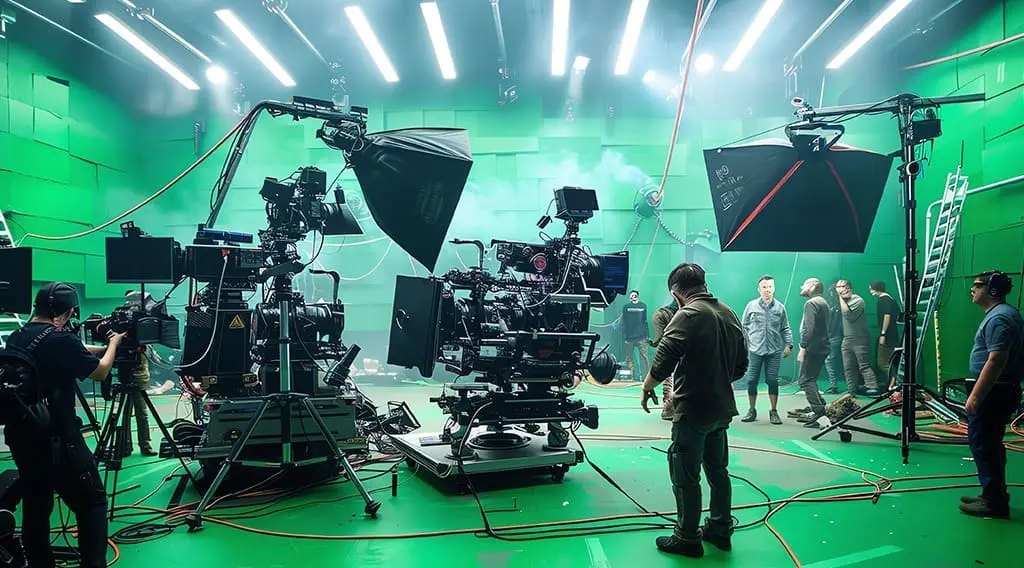The Impact of Virtual Production on Film and Television Production

Imagine watching a movie with characters standing on a real-life spaceship, soaring through the cosmos. Or a TV show where the actors are immersed in a bustling metropolis, only to discover that the city was made entirely of technology. Sounds like science fiction? Well, it's the present, thanks to the groundbreaking concept of virtual production.
What is Virtual Production?
Virtual production is a revolutionary filmmaking and television production technique that blends the physical and digital worlds. It's essentially creating a virtual environment and allowing actors to interact with it in real time. This is achieved through a combination of advanced technologies, including LED walls, game engines, and motion capture.
Unlike traditional filmmaking, where actors perform in front of a green screen and the background is added later in post-production, virtual production provides an immersive experience on set. The actors can see and interact with the virtual world as if it were real, enhancing their performances and allowing for greater creative freedom.
The world of filmmaking is not stagnant. VP Sets, a groundbreaking solution from Digikore Studios dares to break the physical barriers.
The Rise of Virtual Production in VP Sets Film
The film industry has been at the forefront of adopting virtual production. Blockbuster movies like "Avatar" and "The Matrix" showcased early glimpses of this technology's potential. However, it's in recent years that virtual production has truly taken centre stage.

One of the most prominent examples is the "Star Wars" franchise. The Disney+ series "The Mandalorian" pioneered the use of virtual production on a large scale. By constructing a massive LED wall that displayed a virtual set, the filmmakers could create dynamic and realistic environments. This approach not only saved time and money but also allowed for greater flexibility in storytelling.
For instance, in a traditional shoot, if the director wanted to change the lighting or weather conditions, it would require significant adjustments to the physical set. With virtual production, these changes can be made instantly, giving filmmakers unprecedented control over the visual aesthetic of their projects.
Virtual Production in Television
While initially dominated by the film industry, virtual production is rapidly gaining traction in television. With the demand for high-quality visuals increasing, TV shows are embracing this technology to create immersive and engaging storytelling experiences.
Series like "Westworld" and "Stranger Things" have effectively utilized virtual production to build intricate and detailed environments. By combining practical sets with virtual elements, these shows have pushed the boundaries of television production, delivering visually stunning and captivating narratives.
The Benefits of Virtual Production
Virtual production offers a myriad of advantages for both filmmakers and audiences. Let's explore some of the key benefits:
Enhanced Visuals :
By creating realistic and dynamic virtual environments, filmmakers can achieve stunning visual effects that were once impossible or extremely costly to produce.
Time and Cost Efficiency :
Virtual production can streamline the filmmaking process, reducing production time and costs significantly. Building physical sets can be time-consuming and expensive, while virtual sets can be created and modified with relative ease.
Improved Collaboration :
The ability to visualize the final product in real time fosters better collaboration between directors, actors, and the technical crew.
Greater Creative Freedom :
Virtual production empowers filmmakers to experiment with different visual styles, camera angles, and lighting conditions without the constraints of physical limitations.
Immersive Storytelling :
By transporting audiences to breathtaking virtual worlds, filmmakers can create more immersive and engaging storytelling experiences.
While virtual production offers immense potential, it's essential to acknowledge that it's not a one-size-fits-all solution. Some projects may still benefit from traditional filmmaking techniques. However, as technology continues to advance, we can expect virtual production to become an increasingly integral part of the filmmaking and television landscape.
The Future of Virtual Production
The future of virtual production is undeniably bright. As technology evolves, we can anticipate even more groundbreaking advancements in this field. Some potential developments include:
Real-Time Rendering :
Faster processing power will enable even more complex and detailed virtual environments to be rendered in real-time.
Artificial Intelligence :
AI can be used to automate various aspects of virtual production, such as character animation and set design.
Haptic Feedback :
Providing actors with tactile sensations can further enhance their immersion in the virtual world.
Virtual Reality and Augmented Reality Integration :
Blending virtual production with VR and AR technologies can create new and innovative storytelling experiences.
As virtual production matures, it will undoubtedly reshape the film and television industries, offering audiences unprecedented visual spectacles and immersive storytelling.
